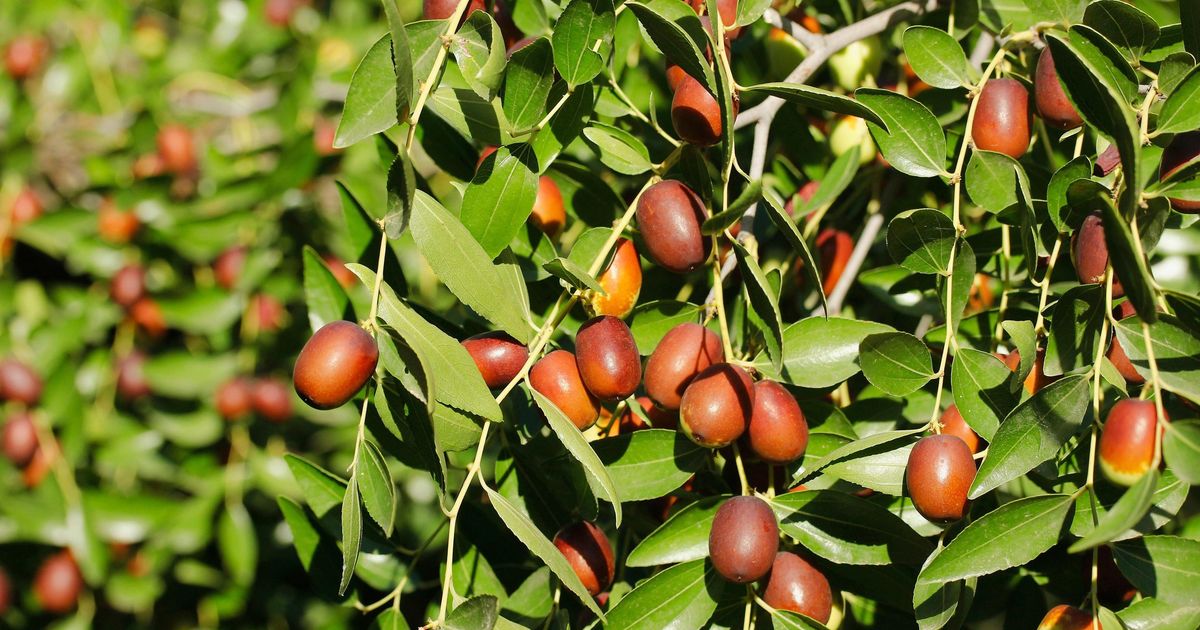Žižole, also known as jujube fruit, belong to the species Ziziphus jujuba. This small, round, or oval fruit grows on a hardy shrub native to Southern Asia, although it now flourishes across the Mediterranean and parts of the Americas. Often called “red dates” or “Chinese dates,” žižole transform from bright green to reddish-brown as they ripen.
Though known as žižole in Slovenia and parts of the Balkans, the fruit has many aliases:
- Jujube (English)
- Ziziphus (Scientific)
- Ber (India)
- Hónzao (红枣) (China)
Each culture embraces žižole in its unique way, emphasizing its role not just in cuisine but also in healing traditions.
In regions like Istria, Dalmatia, and parts of Italy, žižole have long been a seasonal delicacy, enjoyed fresh during harvest season or dried for winter consumption. Historically, they were traded and preserved like figs and dates.
Žižole symbolize good luck, health, and longevity. In traditional Chinese culture, offering jujube fruit to newlyweds or elders signified wishes of a prosperous and fertile life. In the Mediterranean, they often appeared in stories and folk medicine practices.
Žižole are rich in Vitamin C, making them excellent for immune support. They also contain:
- B-complex vitamins (B1, B2, B6)
- Iron
- Phosphorus
- Calcium
- Potassium
- Antioxidants like flavonoids and saponins
Despite their sweet taste, žižole are low in calories. A 100g serving offers:
- Calories: ~80
- Carbohydrates: ~20g
- Protein: 1.2g
- Fat: 0.2g
This makes them a healthy, guilt-free snack.
Thanks to their high Vitamin C and antioxidant content, žižole are fantastic for strengthening the immune system and protecting against common infections.
Rich in dietary fiber, žižole promote healthy digestion, prevent constipation, and support the growth of beneficial gut bacteria.
Žižole contain saponins, natural compounds that help calm the nervous system. In traditional medicine, they’re used as a natural sleep aid.
Antioxidants in žižole fight free radicals, which are responsible for premature aging. Their regular consumption can lead to brighter skin and fewer wrinkles.
Žižole are harvested in late summer to early autumn. Fresh žižole have a crisp texture like an apple, with a tangy-sweet flavor. They’re perfect for snacking right off the tree.
Once dried, žižole resemble dates and become even sweeter. Dried žižole can last for months when stored in airtight containers and are commonly used in desserts, teas, and energy bars.
Popular recipes include:
- Žižole compote
- Žižole jam
- Baked goods like jujube bread and muffins
In Traditional Chinese Medicine (TCM), žižole are valued for their ability to:
- Nourish the blood
- Soothe the mind
- Enhance digestive qi (energy)
In Ayurveda, they’re used to pacify Vata dosha, helping with anxiety and insomnia.
Dried žižole are often steeped in hot water with goji berries and ginger to create a calming tea. They’re also combined with herbs to balance hormones and support liver function.
Žižole thrive in warm, dry climates and are drought-resistant. They prefer:
- Well-drained soil
- Full sun exposure
- Low humidity environments
Annual pruning improves fruit quality. Harvest when fruits turn reddish-brown and are slightly soft. Mature trees can yield up to 40–50kg of fruit annually.
Ingredients:
- 500g dried žižole (pitted)
- 250ml water
- 150g raw sugar
- Lemon juice
Simmer all ingredients until thick. Store in sterilized jars. Perfect for toast or adding to yogurt.
Combine:
- 1 cup dried žižole
- ½ cup oats
- 2 tbsp honey
- 1 tbsp chia seeds
Blend and roll into small balls. Refrigerate before serving.
Žižole are found in:
- Mediterranean local markets
- Asian grocery stores
- Organic and health food shops
- Online dried fruit retailers
- Fresh: Refrigerate in a breathable bag for up to a week
- Dried: Store in an airtight jar in a cool, dry place
Though safe for most, people with:
- Blood sugar sensitivities (as žižole are naturally sweet)
- Allergies to tropical fruits
should consult a doctor before regular consumption.
Žižole may interact with sedatives due to their calming effects. Always talk to your healthcare provider if you’re on medication.
Though both are crunchy, žižole have medicinal benefits and more antioxidants, whereas apples are more widely consumed.
Žižole trees are drought-tolerant, making them environmentally friendly. They require minimal irrigation compared to other fruits like avocados or citrus.
Growing žižole supports agricultural biodiversity and empowers small farmers, especially in Mediterranean and Asian regions.
Q1: Are žižole and dates the same?
No. Žižole (jujubes) are a separate species, lower in calories, and higher in Vitamin C than dates.
Q2: Can žižole help with sleep?
Yes. They contain natural compounds like saponins that promote relaxation and better sleep.
Q3: How do I know when žižole are ripe?
Ripe žižole turn from green to reddish-brown and become slightly soft.
Q4: Are žižole safe during pregnancy?
In moderation, yes. They are nutritious and often recommended in traditional medicine, but consult a doctor for personalized advice.
Q5: What do žižole taste like?
Fresh žižole taste like a tart apple. Dried ones are sweeter, resembling dates.
Q6: Where can I buy žižole online?
You can find them on platforms like Amazon, iHerb, and local organic markets.
Žižole are a nutrient-dense, medicinal powerhouse hidden in plain sight. Whether you enjoy them fresh, dried, or in tea, their health benefits—from immunity to better sleep—are too good to ignore. They’re sustainable, easy to store, and delicious in countless recipes.

